- CA Offshore Wind Energy |
- Datasets |
- North Coast Fisheries
North Coast Fisheries
Feb 4, 2022
(Last modified May 10, 2022)
Uploaded by
Conservation Biology Institute
- Description:
- These data are the result of a collaborative effort by three Northern California Commercial Fishermen’s Associations to map community fishing grounds by species/species complex, gear type, depth, seafloor substrate, and season. For additional details, please refer to the story map that accompanies this data: Story Map Link.The primary goals of this compilation of peer-reviewed fishing data are to:
- Accurately map individual species or species complexes throughout the areas (habitat) where they can be targeted by fishermen employing specific gear types;
- Protect the proprietary personal fishing information of all individuals involved in commercial fishing along California’s North Coast; and
- Graphically represent historic, long-term fishing grounds and recent and emerging fishing by area, species, gear type, substrate, and season.
How to Interpret these maps:The included fisheries represent a snapshot in time of current fisheries, some of which are expanding, declining, or limited due to social constraints. These boundaries roughly follow the fathom curves shown within the maps, and also take into account benthic factors such as substrate and depth.These fisheries boundaries should be considered approximate and are limited by the extent of the nautical charts used in the survey of commercial fishermen to delineate the fisheries. They were delineated by drawing boundaries on printed nautical charts that roughly followed fathom and incorporated input from multiple contributing parties. They were then digitized by Marian Brady Design, a local graphic designer.
Methods of Data Collection for Mapping of Fisheries :
Each fishermen's association formed a committee of individuals (not necessarily members of any association) composed of various fishermen with both recent and historic fishing experiences. Each committee worked collectively to establish fishing areas by species, seasonality, gear type, and seafloor substrate represented by boundaries drawn onto printed transparent navigational charts, one for each individual fishery in the area of study. Committee members were responsible for inclusiveness and accuracy. Because north coast fishermen mutually share the entire fishing grounds from Point Arena to the Oregon Border, each committee submitted their data to the other association committees for fact-checking, peer review, and the inclusion of additional information. At no time did individuals or the committees at large engage in the “recycling” of information previously processed by past interviews, polls, reports or the incomplete data from the MPA process.
These data sets were then transferred to an electronic file format through the contracted work of a local graphics design company. Digitized data was then transferred to GHD a nationally based engineering firm tasked with developing these boundaries into a spatial dataset, collaborating with the project team to populate features with attribute information, producing a story map, and web application.
This mapping project dataset contains fisheries boundaries for all existing commercial fishing activities and potential developing or emerging fisheries. The individual fisheries boundaries do not contain “human based” closed or restricted regulatory areas as regulations and closures are subject to continual modification and do not affect fish or fish habitat.
- Data Provided By:
- The underlying data was collected by the Humboldt Fishermen’s Marketing Association, Salmon Trollers Marketing Association and Crescent City Commercial Fishermen's Association. The spatial dataset was developed by GHD in partnership with the three fishing associations after initial digitization by Marion Brady Design. Dr. Carrie Pomeroy served as the scientific advisor to the project, led by the fishing associations
- Content date:
- Community mapping carried out in 2021 and published December 10, 2021.
- Contact Organization:
- Distribution permission will be managed by the Humboldt Fishermen’s Marketing Association through the Ocean Protection Council. To obtain a copy of this spatial dataset please contact Lindsay Bonito Lindsay.Bonito@resources.ca.gov at the Ocean Protection Council, or the Ocean Protection Council public email address at COPCpublic@resources.ca.gov.
- Contact Person(s):
- Use Constraints:
- Distribution permission will be managed by the Humboldt Fishermen’s Marketing Association through the Ocean Protection Council. To obtain a copy of this spatial dataset please contact Lindsay Bonito Lindsay.Bonito@resources.ca.gov at the Ocean Protection Council, or the Ocean Protection Council public email address at COPCpublic@resources.ca.gov.
- Layer:
- Layer Type:
- Currently Visible Layer:
- All Layer Options:
- Layers in this dataset are based on combinations of the following options. You may choose from these options to select a specific layer on the map page.
- Description:
- Spatial Resolution:
- Credits:
- Citation:
- Purpose:
- Methods:
- References:
- Other Information:
- Time Period:
- Layer Accuracy:
- Attribute Accuracy:
FGDC Standard Metadata XML
Click here to see the full FGDC XML file that was created in Data Basin for this layer.
Original Metadata XML
Click here to see the full XML file that was originally uploaded with this layer.
This dataset is visible to everyone
- Dataset Type:
-
Layer Package
Downloaded by
1 Member
Bookmarked by
3 Groups
Included in
1 Public Map
,
11 Private Maps
Included in
2 Public Galleries
About the Uploader
Conservation Biology Institute
We provide advanced conservation science, technology, and planning to empower our partners in solving the world’s critical ecological challenges



 Lindsay Bonito
Lindsay Bonito
